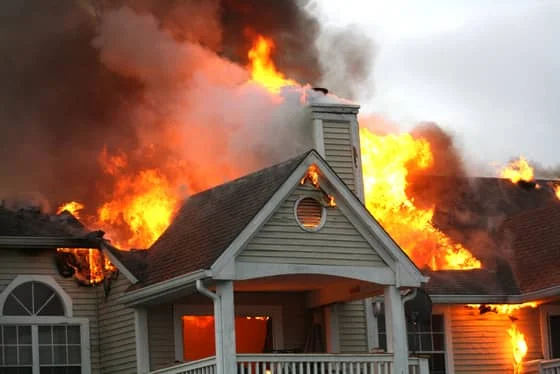Navigating the sale of a fire-damaged house in Hawaii can be fraught with complications and emotional strain. Whether the damage stems from a minor kitchen fire or a major structural blaze, the path to selling such a property is not always straightforward. However, homeowners who want to sell a fire-damaged house in Hawaii may be surprised to learn that their options extend beyond the traditional real estate market. Indeed, specialized avenues exist that cater specifically to properties with fire damage, offering alternative solutions.
This guide is intended to demystify the process of selling a fire-damaged house in Hawaii, offering clarity and actionable steps that can ease the burden and help homeowners make informed decisions.
Assessing the Damage
Understanding the extent of the damage is the first critical step in the process. This assessment can be challenging, especially when dealing with the emotional aftermath of the fire. Homeowners should consider hiring a professional to conduct a thorough inspection and provide a clear overview of the damage, which can range from visible scorch marks to compromised structural integrity or issues with electrical, plumbing, or HVAC systems.
Beyond Surface Markings
Fire damage is not always apparent to the untrained eye. Smoke can permeate walls, insulation, and HVAC systems, leaving behind odors and potential health hazards. Water used to extinguish the fire can lead to mold and mildew, compounding the structural issues. An expert’s assessment is invaluable in ensuring all damage is accounted for.
Legal and Insurance Implications
There may be legal and insurance-related aspects to the damage assessment. Homeowners should review their insurance policies to understand what is covered, as well as any legal requirements for disclosing the damage during the sale.
Deciding: Repair or Sell
After assessing the damage, homeowners are faced with a crucial decision: repair the property before selling, or sell it as-is. Each choice comes with its own set of considerations.
Opting to sell the home in its current condition can expedite the sale process and alleviate the financial burden of repairs. However, selling as-is typically results in a lower sale price. The advantage is that the seller does not have to cover repair costs or ensure the property meets building codes before selling.
Repairing the damage can potentially increase the home’s market value and make it more attractive to traditional buyers. However, this process is time-consuming and requires a significant upfront investment. Homeowners need to weigh the projected increase in the sale price against the cost of repairs to determine if the investment is worthwhile.
Selling Options
There are several avenues through which to sell a fire-damaged house in Hawaii, each with its own pros and cons. Understanding these options can help homeowners choose the path that best aligns with their goals.
Direct Sale to Investors or Specialized Companies
Selling directly to an investor or specialized company that focuses on fire-damaged properties can be the simplest and fastest option. These buyers are accustomed to dealing with such properties and can make a cash offer on the spot. The sale is typically completed much faster than traditional real estate transactions, and the homeowner is not responsible for repairs or cleanup.
Listing with a Real Estate Agent
Listing the property with a real estate agent is the most common method of selling a home. An agent can help price the home appropriately, market the property, and negotiate with potential buyers. For fire-damaged homes, it’s crucial to work with an agent experienced in selling such properties, as they will understand the unique challenges and have a network of buyers who specialize in these types of homes.
Auction
Auctioning the property can be a viable option for a quick sale. Auctions can accelerate the selling process, but they do not guarantee a sale, and the final price is out of the seller’s control. Auctions also come with associated fees and costs that homeowners should be aware of before choosing this option.
Closing the Sale
Once a buyer is secured, the process of closing the sale begins. This involves inspections, negotiations, and paperwork. For fire-damaged homes, the inspection phase is critical, as it can have a profound impact on the final sale price. Homeowners should prepare for potential issues and work closely with their agent or legal counsel to ensure a smooth closing process.
Disclosure and Compliance
Generally, the law requires disclosing fire damage, and homeowners should transparently disclose this to potential buyers to avoid legal consequences. Additionally, bringing fire-damaged homes up to code may involve a complex process. Sellers should be proactive in understanding and addressing any legal requirements related to the property’s condition.
Conclusion
Successfully selling a fire-damaged property in Hawaii demands patience, perseverance, and a thorough knowledge of the available options. By assessing the damage, making informed decisions about repairs, exploring selling avenues, and navigating the closing process, homeowners can successfully sell their fire-damaged homes. Engaging with experts, such as real estate agents, inspectors, and legal counsel, is crucial in ensuring a smooth and successful sale.
Remember, the path to selling a fire-damaged house may not be the same for everyone. Consider your unique circumstances, the extent of the damage, and your goals to determine the best course of action. Whether you’re selling as-is to a specialized buyer or investing in repairs for a traditional sale, it’s essential to ensure each step is strategic. Additionally, align every action with your desired outcome to foster an effective and efficient decision-making process.

